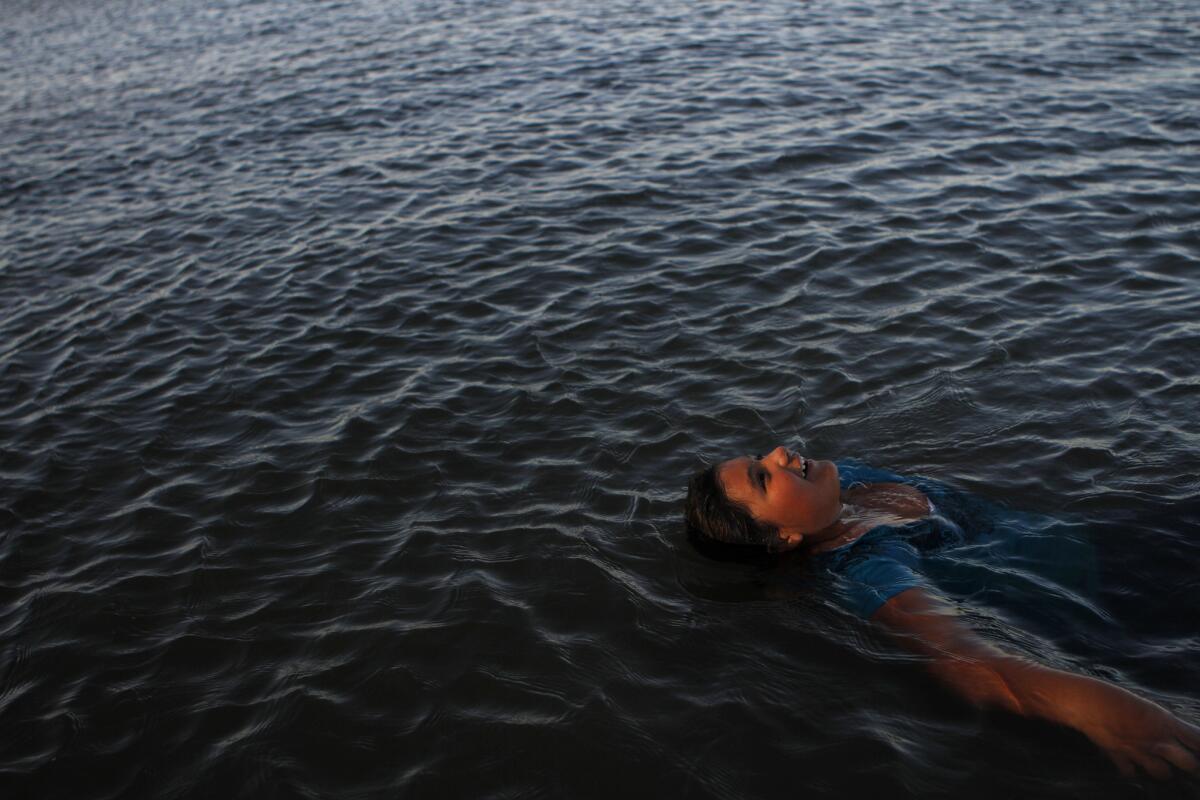Drought’s silver lining: Cleaner water at the beach due to lack of storm runoff

A young girl splashes in the surf on Cabrillo Beach, harborside in San Pedro in 2011.
- Share via
California’s lingering drought has continued to have at least one silver lining: cleaner water along the coast, according to a new report.
Water quality along Southern California’s coast improved last year amid the record-low rainfall largely because lower amounts of storm runoff flowed down to the area, according to the annual Beach Report Card released Wednesday by Heal the Bay, an environmental group.
Ninety-four percent of Los Angeles County’s beaches – long among the most polluted in the state – received A or B grades for the high-traffic summer months, according to the report. That percentage was up 4% from last year’s report and up 10% for the county’s summer average for the last five years.
Statewide, 95% of California’s beaches received A or B grades during the dry summer months.
Heal the Bay’s analysis uses water-quality test results from hundreds of beaches to assign each a letter grade of A to F based on the level of bacteria in beach water, which can indicate pathogens that can sicken swimmers.
The leading cause of water pollution in local beaches is storm-drain runoff, flowing untreated to the coast and often contaminated with motor oil, pesticides, yard waste, animal waste and other pollutants.
“Beach water quality grades may be higher in a given year due to less runoff, yet the resulting improved water quality should not provide a false sense of long-term beach water quality improvement,” the report states.
The “good news is that most of our beaches are clean,” Sarah Sikich, vice president of Heal the Bay, said in an interview. “We’d like people to just be vigilant and check our report card because we’d like them to visit the beach and not the emergency room.”
The study’s findings, Sikich said, are – especially amid a drought – a reminder that “we need to rethink storm runoff and turn that nuisance into a resource by capturing, cleaning and reusing it.”
Los Angeles County still leads the state in the number of beaches with poor water quality, according to Heal the Bay.
Three L.A. County beaches made the report’s statewide list of the Top 10 worst-polluted “Beach Bummers:” Mother’s Beach in Marina del Rey (which came in at No. 2), the popular beach at Santa Monica Pier (No. 6), and Cabrillo Beach in San Pedro (No. 9).
Mother’s Beach, an enclosed beach that gets few waves and “is more like a lake than a typical ocean beach,” continues to have water-quality issues despite the recent installation of water circulators and efforts to divert runoff in the area, said Carol Baker, a spokeswoman for the L.A. County Department of Beaches and Harbors, which oversees the beach.
The big problem, Baker said, is bird poop. About 70% of the bacteria in the water is coming from bird waste and about 10% from dogs, Baker said, citing county studies.
Baker said the county is increasing its public education efforts, telling people not to feed birds, walk their dogs on the beach or leave trash.
“Every beach has birds, but this is not a regular beach,” she said. “The water does not circulate. At [Mother’s Beach], everything you learn from Mary Poppins is wrong: Do not feed the birds.”
According to the Heal the Bay report, the harbor side of Cabrillo Beach, another enclosed beach with poor circulation, has made the “Bummer” list for 12 years straight, despite extensive water-quality improvement projects.
“One solution, which may appear dramatic, may be to eliminate swimming at this beach as a matter of protecting public health,” the report states.
For the first time in the study’s 25-year history, a Huntington Beach locale made the “Bummer” list: Huntington State Beach at Brookhurst Street was 10th. Overall, 95% of Orange County beaches received A grades last summer.
Beach quality plummets during wet weather, with only 63% of California’s monitored beaches receiving A or B grades as runoff increased. As a result, Heal the Bay recommends people not swim or surf in recreational waters during rain storms or for at least three days afterward.
Water quality could turn worse if there is a powerful El Niño this winter, Heal the Bay said.
Twitter: @haileybranson | Google+
More to Read
Sign up for Essential California
The most important California stories and recommendations in your inbox every morning.
You may occasionally receive promotional content from the Los Angeles Times.









